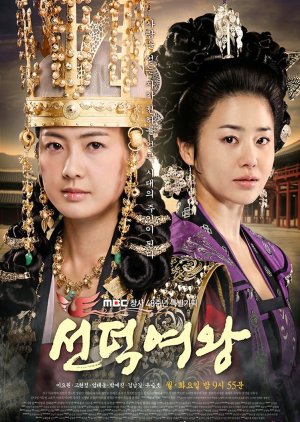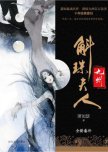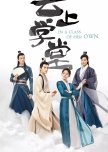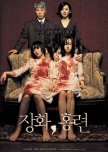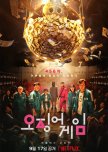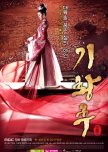
I wouldn’t say: if you like QSD then you'll like EK. I’d say: if you feel that QSD lacks smth, watch EK and vice versa.
In 2009 QSD had madly high rates at the Korean TV.
That’s why in 2013 the EK writers took the QSD plot pattern as the success formula: a smart strong female lead goes up to the royal power, first she cross-dresses as a boy, then fights against an evil chancellor. There are some male leads for who she is a love interest: one is virtuous and very pragmatic, another one has unhealthy psyche. There is the third character (very cute) but there are no romance between them, alas.
QSD has a lot of complicated political affairs, mind games, multidimensional characters but it lacks romance, pathos, adventures.
In EK writers added all this and made a more vivid teenage version of the same plot. Also they made the characters not so complicated and made the female protagonist even supersmart and superstrong.
In 2009 QSD had madly high rates at the Korean TV.
That’s why in 2013 the EK writers took the QSD plot pattern as the success formula: a smart strong female lead goes up to the royal power, first she cross-dresses as a boy, then fights against an evil chancellor. There are some male leads for who she is a love interest: one is virtuous and very pragmatic, another one has unhealthy psyche. There is the third character (very cute) but there are no romance between them, alas.
QSD has a lot of complicated political affairs, mind games, multidimensional characters but it lacks romance, pathos, adventures.
In EK writers added all this and made a more vivid teenage version of the same plot. Also they made the characters not so complicated and made the female protagonist even supersmart and superstrong.
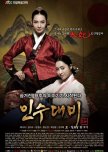

Written by the same screenwriters <3 Arthdal can obviously put before Silla time.
Both talks about a cursed child grown up far away from their land. They both return to find who they are... in Arthdan also to save someone.
Both talks about a cursed child grown up far away from their land. They both return to find who they are... in Arthdan also to save someone.

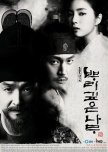
One of the standing blocks of QSD is the script, the deep conversations between "good" and "evil" characters, and how much the drama made you think of politics, justice and morality. Tree with Deep Roots also has the same ingredient.
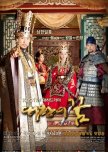
Queen Seon Duk is basically the same story but with the focus on Queen Seon Duk instead. Queen Seon Duk is however a bit less fact-based then The Geat King's Dream.

They mention several times Queen Seon Duk and Bidam.
Also Bidam actions in Queen Seon Duk have consequences in Six Flying Dragons.
Other similarities:
- Same writers.
- Politics.
- The "bad" characters are also very charming.
- Strong female characters.
- Both dramas tell historical events.
- Almost there is no romance (Is more subtle compared to SFD).
- Action.
They have more things in common, like the treatment of the characters and the drama structure (the sequel A tree with deep roots also follow the same structure).
Also Bidam actions in Queen Seon Duk have consequences in Six Flying Dragons.
Other similarities:
- Same writers.
- Politics.
- The "bad" characters are also very charming.
- Strong female characters.
- Both dramas tell historical events.
- Almost there is no romance (Is more subtle compared to SFD).
- Action.
They have more things in common, like the treatment of the characters and the drama structure (the sequel A tree with deep roots also follow the same structure).
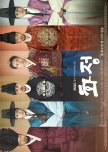
Both dramas have a protagonist that is very strong and figths for what she belives. Both princesses need to live in a world made for the men. They'll need to search for the power to make their people happiness.

=> Both are set in the Silla Dynasty
=> If you became a fan of King Jinheung from Hwarang, you can be satisfied of how he has become a great King at the beginning of Queen Seon Deok.
=> As both are only two of the very few dramas about Silla dynasty, both dramas are among the very few that can help people understand the bone rank system in Silla.
=> Both dramas have a woman who is technically not a queen, but acts and really wants to be one.
=> Both dramas offer either a beginning or an ending for the character King Jinheung. For Hwarang fans, Queen Seon Deok shows how he became a great King. For Queen Seon Deok fans, Hwanrang is a possible beginning of Queen Seon Deok's grandfather Jinheung.
=> Hwarang (youth warriors) are given importance in one drama. If you want to see a different kind of Hwarang you just watched in one drama, then watch the other one.
=> For Hwarang fans, Queen Seon Deok is what happens if the King of Silla fails to produce a Seonggol (sacred bone) male heir that continues to live a long life.
=> For Queen Seon Deok fans, I believe that the main villain in Hwarang Park Young Shil is Mishil's grandfather (see her ancestors on wikipedia to prove), so its a treat to see her family's roots on villainy.
=> If you became a fan of King Jinheung from Hwarang, you can be satisfied of how he has become a great King at the beginning of Queen Seon Deok.
=> As both are only two of the very few dramas about Silla dynasty, both dramas are among the very few that can help people understand the bone rank system in Silla.
=> Both dramas have a woman who is technically not a queen, but acts and really wants to be one.
=> Both dramas offer either a beginning or an ending for the character King Jinheung. For Hwarang fans, Queen Seon Deok shows how he became a great King. For Queen Seon Deok fans, Hwanrang is a possible beginning of Queen Seon Deok's grandfather Jinheung.
=> Hwarang (youth warriors) are given importance in one drama. If you want to see a different kind of Hwarang you just watched in one drama, then watch the other one.
=> For Hwarang fans, Queen Seon Deok is what happens if the King of Silla fails to produce a Seonggol (sacred bone) male heir that continues to live a long life.
=> For Queen Seon Deok fans, I believe that the main villain in Hwarang Park Young Shil is Mishil's grandfather (see her ancestors on wikipedia to prove), so its a treat to see her family's roots on villainy.
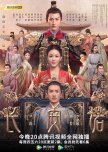

Both dramas are the stories of the blessed true king’s rise to power facing many hard trials when he/she goes up from level to level, but sometimes pays high price for it.
Of course, these two dramas have big difference: First King’s Four Gods (aka Legend) is a fantasy with lots of magic, Queen Seonduk is just a historic biopic (So, FKFG is about king Arthur, QSD is about Elisabeth I Tudor). FKFG was shortened and got sudden ending (with lost plotlines), QSD was prolonged and got additional story arc in its final part (thrilling but hard to watch).
Though QSD is a political drama almostly cleaned from supernatural it has many mythological tropes (like sky omens, prophecies etc.). QSD takes some plot twists and typical chacracters from FKFG or from other previous K-dramas about great kings.
Also in both dramas the unification of various Korean kingdoms is a sacred super-goal that justifies any means
Of course, these two dramas have big difference: First King’s Four Gods (aka Legend) is a fantasy with lots of magic, Queen Seonduk is just a historic biopic (So, FKFG is about king Arthur, QSD is about Elisabeth I Tudor). FKFG was shortened and got sudden ending (with lost plotlines), QSD was prolonged and got additional story arc in its final part (thrilling but hard to watch).
Though QSD is a political drama almostly cleaned from supernatural it has many mythological tropes (like sky omens, prophecies etc.). QSD takes some plot twists and typical chacracters from FKFG or from other previous K-dramas about great kings.
Also in both dramas the unification of various Korean kingdoms is a sacred super-goal that justifies any means
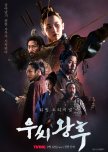
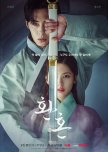
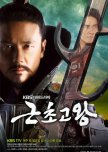

Both are the stories about how a woman (a princess in QSD and an aristocrat daughter in TEOC) becomes - after facing many obstacles - the ruler of a country. Both are based on real characters, however their stories are dramatised for the shows.
The main difference is that while in QSD the heroine climbs the ranks first as a cross-dressed boy and then as a princess, in TEOC, the main character has to climb through the emperor's harem (and so the story, especially the first part, is more heavily focused on harem intrigues and conflicts), which is then replaced with more political plots.
Both have tragedy as well as a fair dose of angst (more so for TEOC though), well developed characters, are exciting and completely suck you in.
After finishing both there's this feeling of melancholic bitterness.
The main difference is that while in QSD the heroine climbs the ranks first as a cross-dressed boy and then as a princess, in TEOC, the main character has to climb through the emperor's harem (and so the story, especially the first part, is more heavily focused on harem intrigues and conflicts), which is then replaced with more political plots.
Both have tragedy as well as a fair dose of angst (more so for TEOC though), well developed characters, are exciting and completely suck you in.
After finishing both there's this feeling of melancholic bitterness.

